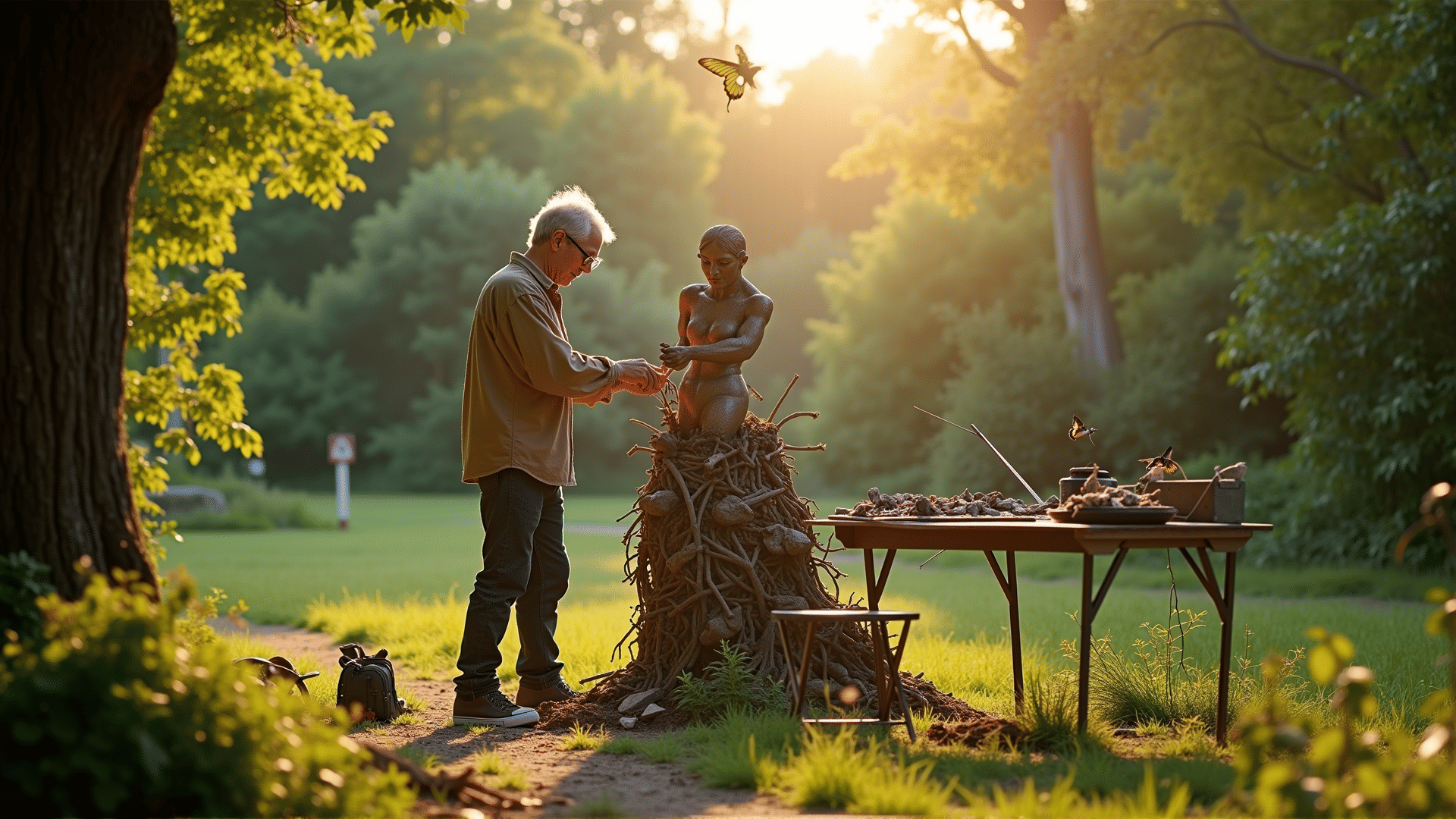In recent years, the art world has experienced a significant shift towards sustainability, as artists across the globe embrace eco-conscious practices and materials. This movement, driven by a growing awareness of environmental issues, is transforming how art is created and perceived, resulting in works that are not only visually stunning but also environmentally responsible.
One of the primary motivations behind this shift is the recognition of the substantial environmental impact that traditional art practices can have. The production of art supplies often involves the use of non-renewable resources and harsh chemicals, leading to pollution and waste. In response, a new wave of artists is pioneering methods that prioritize sustainability, using materials that are renewable, recycled, or biodegradable.
Artists like Olafur Eliasson and Agnes Denes exemplify this trend, often employing natural elements such as light, water, and organic materials in their installations to create immersive experiences that reflect on humanity's relationship with nature. By incorporating elements that change and evolve with the environment, their art not only highlights the beauty of the natural world but also its fragility and impermanence.
Furthermore, recycling and upcycling have become central tenets of eco-conscious art. Artists are increasingly using found objects or discarded materials to create their works, transforming waste into beauty. This practice not only reduces the environmental impact of producing new materials but also challenges viewers to reconsider their perspectives on consumption and waste. The sculptures of El Anatsui, made entirely from discarded bottle caps and aluminum, are a striking example, drawing attention to issues of consumerism and sustainability.
In addition to the materials used, many artists are also rethinking their production processes to minimize their carbon footprint. This may involve using energy-efficient methods, sourcing locally to reduce transportation emissions, or creating ephemeral art that requires fewer resources. For instance, "land art" — where art is created directly within the landscape — often leaves no trace after its existence, celebrating the idea of art as a fleeting, yet profound, experience.
The rise of eco-conscious art is also impacting the broader art market, with galleries and exhibitions increasingly showcasing works that embody sustainable principles. This not only helps to raise awareness about environmental issues but also encourages collectors and patrons to support artists who prioritize sustainability. Institutions are also joining the movement by implementing eco-friendly practices such as reducing energy use, using sustainable building materials, and supporting educational programs on the importance of sustainability in the arts.
Educational programs and workshops are fostering a new generation of artists who are environmentally aware and equipped to integrate sustainable practices into their work from the start. By instilling these values early on, the art world can ensure that eco-consciousness is not merely a trend but an integral part of artistic practice moving forward.
In conclusion, the rise of eco-conscious art marks a significant and inspiring change in the artistic landscape. As artists continue to explore innovative ways to create beauty with minimal environmental impact, they are paving the way for a more sustainable future. By embracing materials and methods that honor our planet, eco-conscious artists remind us of the profound connection between creativity and nature, urging us all to consider the environmental implications of our actions and choices. As art continues to evolve in harmony with the earth, it becomes a powerful agent of change, inspiring others to join the movement towards a more sustainable world.
